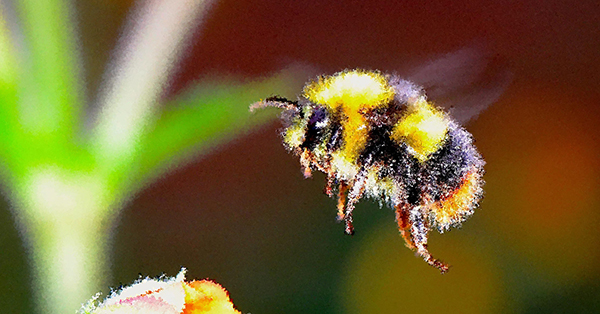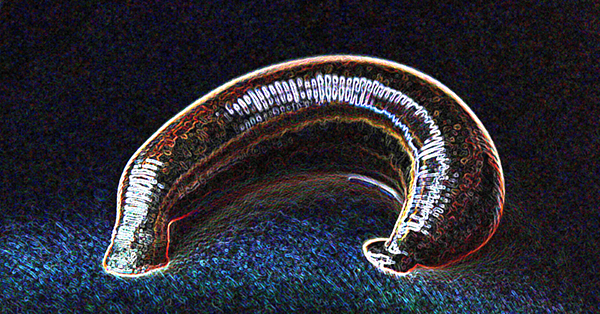Crossroads Creatures
Jun 2nd, 2022 by FayOnyx
Here are a few examples of the strange and wondrous creatures that live in Crossroads. Additional creatures will be revealed as they come up in Unfamiliar Heroes episodes. They are:
Content Warning: This page contains spoilers for various Unfamiliar Heroes games, including the Adventurers Academy game that is in the planning stages. In addition, it contains descriptions of predators, animal reproduction, and creepy invertebrates.

Black and white illustrations of five mythical animals: a phoenix, dragon, unicorn, griffin, and hydra.
Dragon Weasels
Appearance: Adult Dragon Weasels are double the length of an ordinary weasel—nearly three feet long, if their feathery tails are included. They are shining white with six short legs, two pairs of feathered wings, a fluffy ridge of fur running down their spines, and shimmering scales down their bellies. Their faces look just like weasel faces, with beady black eyes, small round ears, and a dark triangular nose surrounded by whiskers.
Main Traits: More than anything else, Dragon Weasels are weasels that can fly and walk on air. Like their weasel ancestors, they are built to fit through the narrow tunnels of rodents, their wings tucking tightly to their sides to navigate tight twists and turns. In order to stay warm while being skinny enough to fit through narrow tunnels, they have a high metabolism and no ability to store fat. This makes them voracious predators that need to eat half their body weight every day. Their high metabolism also makes them quick and energetic.
Owlbears

Illustration of a brown owlbear sitting in the back of a wagon. They have a feathered owl head and a furry bear body. A band of feathers encircles their waist. The owlbear has an intense, focused look on their face as they sit awkwardly on their tush with their hind legs splayed out. This adorable work of art was created by the amazing Meghan Dornbrock.
Appearance: These powerful predators look like combination of a bear and an owl. Their bodies are shaped like that of a bear with powerful hooked beaks where a bear’s snout would be and large disks of brown and white feathers around each large eye. Their ears, like those of an owl, are hidden in their feathers. The rest of their body is covered in fur, except for a crest of feathers that runs from the top of their head all the way down their spine and band of feathers that goes around their bellies and hips (much like a feathery tutu).
Main Traits: Owlbears walk on all four legs like a bear, but can stand up on their hind legs when they need to. Their fur and feathers are thick, functioning much like armor. Like bears, they have strong arms with long claws and powerful jaws. Male and female owlbears have a similar appearance, with the females being slightly larger and darker in color. Owlbears are magical animals and, as such, have a natural resistance to magic. It is still possible to affect them with magic, but not as easy and magic will sometimes have unusual effects on them.
Little Giant Bumblebees

Illustration of a flying bumblebee with long, shaggy hair. It has a yellow ruff around its head, black between its wings, then more yellow, followed by black, and ending with a rusty orange tail.
Appearance: Little Giant Bumblebees are the size of small dogs, with round bodies and long, soft, fuzzy hair. They have a yellow ruff around their head, a black band between their wings, then a yellow stripe, followed by a black stripe, followed by a rusty-orange tail.
Giant Bumblebees: The magic that made the flowers of the Giant Flower Forests giant also made their pollinators giant. Like the majority of their ordinary-sized bumblebee counterparts, Giant Bumblebees are social insects that form small colonies. They range from the size of a small dog to that of a large dog, but most are medium sized. Giant Bumblebees feed on nectar from giant flowers and gather pollen to feed their young.
Like ordinary bumblebees, Giant Bumblebees can sting repeatedly if they need to, but they are generally docile and ignore people and animals. In fact, having fewer predators than ordinary bees, Giant Bumblebees are even more gentle and docile. They don’t attack unless something harms them or enters their hive.
Main Traits: Little Giant Bumblebees are the smallest Giant Bumblebee. They are also one of the most common Giant Bumblebees. In addition, they are active for more of the year than other bumblebee species, their smaller size meaning that they need less food, which is a benefit during those times of the year with fewer flowers. They also have especially long, thick hair to keep them warm in conditions too cool for other bees. Little Giant Bumblebees make small nests of twenty to forty bees above ground in hollows or thick grass.
Arcane Leeches

Illustration of a dark leech with glowing edges that is curled into a crescent shape. Both of its suckers are attached to a dark surface with many specs of blue light shining inside it.
Appearance: Arcane Leeches are six-inch-long, shiny, dark worms with flattened, segmented bodies that are thick in the back and narrow in the front. They have suckers on both ends and are brownish-black, with an oily, rainbow shimmer. In areas that are particularly rich in magic they can grow larger, a foot long or more.
Movement: Typically, Arcane Leeches move by inching along like an ordinary leech. They start by attaching their rear sucker to something, stretching out their front end as far as it can go, and attaching their front sucker. Then they release their rear sucker, contract their body up into an arch, and reattach their hind sucker. Next they release their front sucker and start the process over again by stretching out and waving their front sucker around as they search for something to latch onto.
Main Traits: Originally from the Warped Magic Zones of the Singing Jungle, Arcane Leeches are now a pest that drains, damages, and destroys magic items and plants. Any magic cast on them is likely to go awry. Killing one is guaranteed to make magic go awry. Because of this, they have to be handled with great care using non-magical means, which makes them challenging to deal with.
Will-o’-wisps

Mysterious balls of light hover temptingly in the air near a forest pathway lit by golden afternoon light that makes everything look pretty and innocent. This is an alteration of an artwork by Darkmoon_Art.
Appearance: Will-o’-wisps appear as floating balls of light, like distant lanterns, that bob tantalizingly between trees, rocks, bushes, or other plants.
How They Form: Will-o’-wisps are a type of ghost formed by deaths that are marked with particularly intense longing and anger, especially those that also involve injustice or betrayal. It is the combination of longing and anger that creates a will-o’-wisp, rather than a different type of ghost. If nothing is done to resolve those emotions, or the injustice or betrayal that caused them, all of that unresolved emotion overwhelms everything else, anchoring the dead person’s spirit to the living world in the form of a vengeful will-o’-wisp that kills anyone it can lure into its trap.
Main Traits: Once they are fully formed, will-o’-wisps know nothing besides the intense longing and anger that they feel. They don’t have any memories, nor do they have any desires outside of acting out their emotions by harming the living.
Like most ghosts, will-o’-wisps are incorporeal and can’t directly harm living people. Instead, the intense longing a will-o’-wisp feels is transmuted by Emotion Magic into a magical lure that compels their victims to follow them. The will-o’-wisp then leads their victim into danger in an attempt to harm or kill them. This danger can be a hazard of the terrain, such as a bog or cliff, or it can be a deadly predator. Will-o’-wisps are particularly known for partnering with Vampire Vine.

